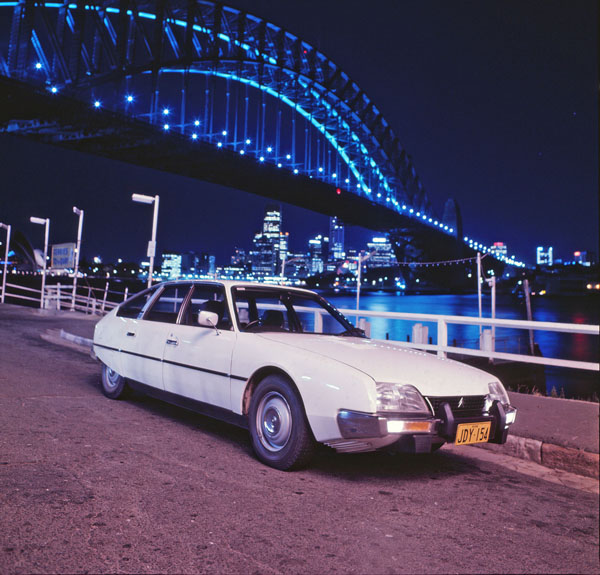The Citroen CX was a replacement car for the Citroen D-series – one of the most successful cars of the 1950s and 60s. The CX was designed by Robert Opron who had originally conceived the DS. Shortly after its release the CX was voted ‘Car of the Year’ by the European motoring press and at the 1975 Geneva Motor Show it was awarded the ultimate acclaim from 170 International design experts: The Style Auto award.
Many of the design features from earlier Citroens were carried through to the CX. Possibly the most notable of these was Citroen’s unique hydro-pneumatic integral self-levelling suspension. This suspension was so effective in ironing out bumps and corrugations in roads it was used under licence by the Rolls-Royce Camargue and the Mercedes-Benz 450SEL and W124 models as it was considered the best suspension ever produced. Other features which the CX carried over from the DS were the shrouded rear wheels enclosed by removable spats and the use of stainless steel for the bumpers and other components normally made from chrome plated steel.
Citroen CX also had speed-adjustable power steering, first used on the earlier Citroen SM and a unique interior design that did away with steering column stalks. The single-spoke steering wheel became a special Citroen feature. It was initially available as a four-door saloon or a five-door estate. The four-door saloon was a fastback design and had a transverse mounted engine making it somewhat smaller than the DS, and so it was considered to be too short to be a chauffer driven limousine.
In 1976, Citroen introduced a longer body saloon using the wheelbase of the estate as a ‘Prestige’ variant which offered more rear leg-room.
Early model CX cars were powered by a 1985 cc four-cylinder in-line engine but in 1986 Series two cars were introduced which had a number of improvements including better rust-proofing and more sophisticated electronics. These models were more highly sought after in the used car market. A diesel engine was offered in 1987 to sell alongside the 2.2-litre all-alloy overhead camshaft engine, and a rugged 2.5-litre overhead-valve engine. This latter unit could also be ordered in a supercharged form which had an intercooler and delivered 125kW of power.
That the CX was a very successful model for Citroen is evident from the number of vehicles produced. In 1975, the first full year of production over 96,700 cars were produced, only 200 fewer than the number of DS and ID models made in 1973. Citroen claimed the total number of CX models built during the model’s life was over one million. Of this number some 12 per cent were estates and over 33 per cent were diesel-powered models.
The CX also achieved some success in motor sport. In 1981 a CX was the first two-wheel drive touring car to complete the Paris¬–Dakar rally and in 1977 a team of four CX2400s won the Constructors Cup for Citroen in the second London–Sydney Marathon.
